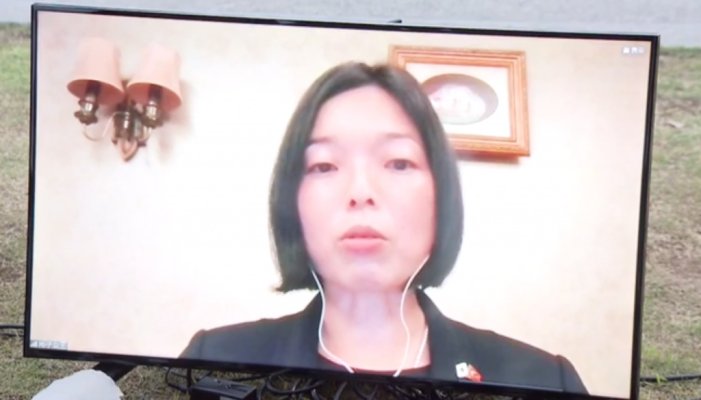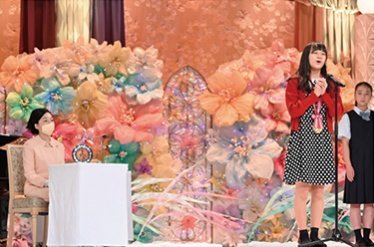
No need to apologize. I don't remember covering the rift. This
November 2016 Jprime article describes some of the problems, take with a grain of salt ... or more.
- When relations were better, Princess Nobuko supported her husband through cancer treatments, planning menus of 6 meals a day while considering nutritional balance.
- Prince Tomohito and Princess Nobuko separated since summer 2004.
- Princess Nobuko suffered menopause and gastric ulcers, resting for about 2 years at her sister’s villa in Karuizawa.
- After returning to Mikasa East residence in Akasaka Estate, Nobuko withdrew (not sure what this means exactly) and her health remained unstable, being hospitalized repeatedly. In December 2008, she was admitted to Keio Hospital for nearly a year for "stress asthma."
- During this period, it seems Akiko and Yoko's relationship with their mother deteriorated, thinking she was leaving their sick father behind and neglecting public duties.
- Nobuko did not return to the Mikasa East residence when she was discharged in October 2009. Instead, she moved to the former IHA official residence in Chiyoda Ward and continued to live separately for medical treatment.
- Before Prince Tomohito died in June 2012, Princess Nobuko allegedly visited the hospital but was refused a meeting.
- Prince Tomohito was thinking of divorcing Princess Nobuko, an intention shared by Princesses Akiko and Yoko.
- Princess Nobuko suddenly became active after Prince Tomohito's death, publishing a cookbook and energetically attending events from local public duties to garden parties and court rituals.
- Princess Akiko expressed dissatisfaction with her mother’s "self-paced" activities. In a monthly magazine (Jprime didn’t specify which one), an unusual memorandum was published that if her mother wanted to return to public affairs, then she should explain to the people and greet Prince Mikasa.
- Princess Nobuko's medical condition was announced but she did not greet Prince Mikasa as "stress-induced asthma will recur."
- Perhaps because of that, she couldn't meet Prince Mikasa when she visited the hospital around August 15. (Prince Mikasa was hospitalized from May 2016 until his death)
- In July 2016, Princess Nobuko allegedly visited the Mikasa East residence with a lawyer and key dealer (locksmith?). It was an abnormal situation where she "invaded" her former home to retrieve her personal belongings.
- An IHA official claims "domestic violence" since the early days of marriage. Despite choosing Nobuko as "the best" and had "expectations," Prince Tomohito became disappointed in his wife's personality and behavior, leading to violence and alcoholism. (Note: Prince Tomohito's first proposal in February 1972 or 1973 was rejected as Nobuko Aso (16-18) was too young. They later married in 1980.
English wikipedia reports the first proposal in 1973 but
Japanese wikipedia claims the first proposal happened in February 1972)
- Reportedly, Nobuko enjoys being in the spotlight which dissatisfied her husband.
- Staff at Mikasa East residence have not abandoned hope for "reconciliation" noting there are dozens of old family photos with Tomohito, Nobuko, Akiko and Yoko. "If the daughters really hated their mother, they probably wouldn't keep such photos up."
Oddly, the Jprime article doesn't mention Princess Nobuko's stroke in 2004 which would impact one's health and activities.
Prince Tomohito alluded to family problems and his drinking in an
October 2007 interview with the New York Times.
... "It's not only the past one or two years," the prince said of the stress behind his alcoholism. "As long as I can remember, the imperial family's been like one big ball of stress"
[...] the prince attributed his recurring cancer to stress, the same kind of stress that, he has said publicly, first led to his over drinking in his 30s and aggravated it in the last couple of years
[...]
The prince, who has two daughters with his wife, Princess Nobuko, cited difficulties at home. "Things became messed up inside our home," he said, adding, "When you’ve been together for 26 years, well, you know."


 I don't know. Shinyusha's post didn't explain further. I remember Tokyo's governor asked residents to refrain from traveling to other prefectures but I thought the association or university would have considered that before chartering a bus and all.
I don't know. Shinyusha's post didn't explain further. I remember Tokyo's governor asked residents to refrain from traveling to other prefectures but I thought the association or university would have considered that before chartering a bus and all.

